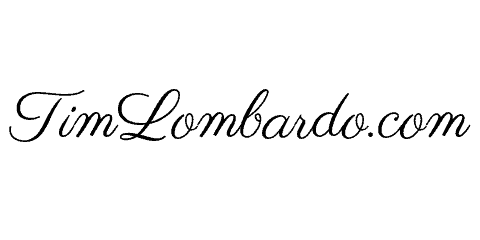Thoughts on Thinking for a Change by John Maxwell
My Thoughts on Thinking For a Change
Thoughts are at the core of who we are and what we do. The whole “believe it” before you achieve it starts with a thought process. I read John Maxwell’s book, Thinking for a Change, and I want to share some of my thoughts about it.
Right out of the gate, I love the double meaning in the book title! I will not spell that out for you, but will let you think about it! It is brilliant.

The Value of Good Thinking
There is value in thinking good thoughts. Your actions reflect what you think about, and ideas help you decide what you will do now and in the future. Taking your thoughts captive and adding some good old-fashioned discipline to your thought life is valuable.
Good thinking is intentional and something you exercise daily. Instead of just letting random thoughts appear, you decide to think for a change.
The danger is right around the corner when I just let my thoughts run wild without self-control. We must learn to discipline our minds and capture our thoughts before they escape out of our mouths!
Boy, have I said a dumb thing once, twice, or a thousand times! Let’s take a look at how to change our thinking.
How to Change Your Thinking
The book covers so much material but what I got out of it is that you have to schedule a time and place to think. You learn new things by reading books, practicing new skills, talking to people, listening, and writing things down, and then you take the time to think about it. I mean setting time aside, getting a quiet place to think, and then doing it without distractions.
Shut the TV off and put the phone away, kind of thinking. No Netflix until you stop to think!
John covers more detail in his book; however, I am just reflecting on some of the key takeaways that stuck with me. There are different ways to think, and each method has value and a purpose. Let’s take a look at a few.
Intentional Thinking
It would help if you were intentional about your thinking. Pick something specific you need to think about and spend the time and energy to stop and think about that one thing. The intention may be not to rush a decision. Intentionally take time to think about your options and look at the possibilities to make a good decision.
Intentionally decide to sleep on big decisions. Clarity comes in the morning after you think for a change the night before!
Big Picture Thinking
Think about the big picture. In the overall big picture, ask yourself what you want to see if there are no obstacles in your way. Do this without worrying about the details or specific processes.
Think about what it would mean to you if you reached the big picture you have in your mind. Does the big picture still look awesome after you think about it? If it does, then you need to think about seriously pursuing it! Dream about what you would like to achieve and think about how that aligns with your core beliefs and values.
It is good to take a step back and look at the big picture. A 30,000 ft view looking at the landscape of the situation. Are the right people and resources in a position to make the goal reachable? Is the current schedule leading to the correct destination? Is everything in proper balance to properly support the purpose and the people involved?
Focused Thinking
Focused thinking is just what it implies. You focus time, energy, and thoughts on what you are thinking. A full review is where you focus on the details of what you need to do to achieve your goal.
Focus on the process, commitment, resources, team members, money, and time it will take to get things done. Focus usually involves a pad and paper to write your thoughts on the subject.
I find making a pros and cons list which I think helps me see both sides of the situation. Make it as long as possible, and don’t stop writing until you exhaust all the possibilities you can think of.
Realistic Thinking
Realistic thinking is where you stop dreaming for a moment and think about how you will practically make your goals happen. Being honest is where you stare at your pros and cons list and come up with solutions. Maybe this is where you seek out the thoughts of a person who has already done this. Please read about how others conquered the same thing and learn from their mistakes!
Realistic thinking should sober you and excite you. It will take you down from the high of dreaming but set you up to dig in and set up a foundation for success. Being realistic is not knowing all the challenges ahead of time, but it helps you identify the obvious roadblocks and allows you to think about how to overcome those quickly.
Strategic Thinking
Strategic thinking is where you pull out all your tools and plan for success. Set a timeline for short-term goals and long-term completion. Put the appropriate time in your calendar and plan out your financial needs. Put a strategic team in place on paper and then take action to build that team.
Part of your strategy should include crazy amounts of effort to ensure things happen. Strategically plan to be passionately committed to the end. Plan to never quit no matter what.
Take an honest look at how others will be affected by your next move. How can “win-win” be worked into the plan? How can a solid contribution be made to enhance the lives of others? The strategy took a conscious effort and focused thought about those around you.
Take time to muse on a situation. Be thorough about thinking through the scenarios and approach. Be realistic about what you can do and how best to do it. Anticipate outcomes based on directions taken to accomplish something. Look at timeframes and little steps to reach the bigger picture. Strategize with others and rely on their strengths to give you good counsel.
Reflective Thinking
Reflective thinking takes a moment to look back. We look back to see what we have done and how we have grown. We look back to learn from our successes and failures. We look back to be thankful for what we have done and who we have become.
Reflective thinking is decisive if we are honest and willing to change. You know, thinking for a change! We reflect to see if it was worth it and sometimes realize that we wasted time.
Take time to learn from the past. Reflect on previous experience and think about how things went. Think about how back then has prepared you for right now.
Shared Thinking
Shared thinking is just fantastic, fun, and valuable. You can do all the other types of thinking we just covered with someone who can help you! Spending time with other people we trust and thinking together is incredible.
Some people call this brainstorming. Think about it! Remember, the storm can get out of control depending on who you invite to participate.
Collaboration should never replace your time to think; it should be an additional thing you do to help you think for a change.
Creative Thinking
Outside the box is where you can find different, exciting, and new opportunities. Think about things in a way you have not before. Go somewhere you have never been and do something you have never done, and muse on new thoughts. Take a completely new approach and be creative with the process. Talk with different people and ask them to be creative.
Thinking about a change is something we should all get better at.
- Set time aside daily to think
- Find a quiet place where you enjoy thinking
- Hot tea makes people think. (no idea why)
- Ask great questions to get great answers
- The brain needs exercise (use it often)
- Slow down on big decisions
- Speed up on easy choices (don’t be lazy)
- Keep a pen and pad of paper handy at all times
- Tell yourself it is OK to change your mind
- Learn valuable principles and think about them
- Reading habits enhance thinking habits
- Have a great attitude when you think
- Don’t let circumstances cloud your judgment
- If a book motivates you, read it many times
Bottom line Thinking
The goal is to get to the bottom line.
To Your Success.








